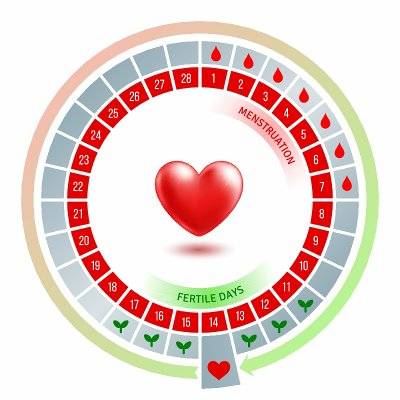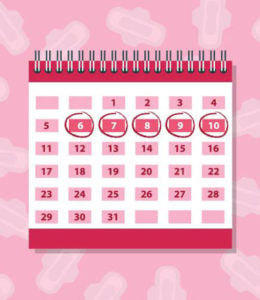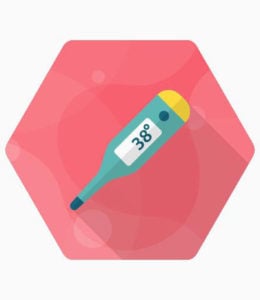WHAT IS THE SAFE PERIOD FOR HAVING SEX?
Nothing should get in the way of you having a good time with your partner! Worrying about getting pregnant is a serious dampener of even the best moods. If you are constantly afraid that you will end up pregnant, don’t worry – closely listening to the body and understanding its rhythm gives you a way to enjoy safe sex. With the right information, you can have stress free delights with your partner!
As they say, “It’s better to be safe than sorry.”
In this post, you would be getting to know the nitty-gritty of having sex without the fear of getting unwanted conception unless you intend to go for it.
WHAT IS THE SAFE PERIOD FOR HAVING SEX?
Your menstrual cycle starts on the first day of your period and ends on the first day of your next period. A menstrual cycle lasts for 28 days on an average for over 90% of women.
The safer period to have sex are from day 1 to day 7 and from day 21 till when your cycle ends. But, this calculation is valid only if your cycle is 28 days. If it is longer or shorter, this method isn’t a reliable way for you.
WHY ARE THESE DAYS SAFE?
In the average menstrual cycle, there are around 7 to 8 days which present the most optimal conditions for getting pregnant. When you can identify these days and can abstain or use protection on those days, you can enjoy unprotected sex with your beloved on the other days without getting pregnant.
Every menstrual cycle sees the release of a single egg. The egg lives only for 24 hours. The sperm can live in your body for six days and can fertilise the egg in this period. So collectively, a woman is prone to get pregnant in the 7 to 8 days around the release of the egg.
THE FERTILITY PERIOD
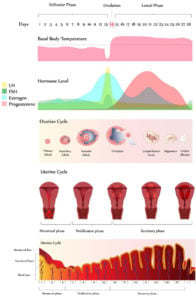
The right understanding of three phases of the menstrual cycle in detail is must to understand the safe days. So, here we go:
1. The pre-ovulatory phase: This phase begins on the day your period stops and extends till ovulation. For a 28 day cycle, the ovulation usually happens on the 14th day of the cycle.
Safe Period: The first seven days of the pre ovulatory phase are safe as there is no egg waiting in the uterus to receive the sperm. Although the actual ovulation happens on the 14th day yet, there are chances of pre-ovulation or post-ovulation due to various factors. And, the sperm takes about three to five days to travel to meet the egg. Hence, only first seven days are considered safe.
2. Ovulatory Phase: This is the most fertile phase of the cycle with maximum chances of conception. Usually, the process of ovulation occurs between the 10th and 19th day of menstrual cycle. During this phase, the pregnancy supporting hormones are released at their peak level in the female body. In this phase, the uterus lining thickens to welcome the embedding of the fertilized egg to its inner wall.
There is no way safe to have unprotected sex during this phase. One needs to use solid preventive measures to keep safe from unwanted pregnancy during this phase.
3. Post-ovulatory phase: This phase starts from the 22nd day and extends till when the menstrual cycle breaks into a period. It is again considered to be a safe phase for having unprotected sex. The egg has degenerated by now and the body is getting ready to shed the rich inner lining of the uterus through bleeding.
This method is reliable for those whose menstrual cycle lasts for 26 days to 32 days, and, for those who periods are regular with minor variations.
Tip: You can also buy ovulation detecting kit in medical stores. You can use it to measure the levels of your LT (Luteinizing Hormone) which will help you gauge your ovulation. The LT level in women’s body is its highest right before ovulation.
This calendar method has been used by women for decades now. But remember that this calculation isn’t helpful if your menstrual cycle is shorter than 27 days. This is a science based method to prevent unwanted pregnancy but it is not 100% fool proof. Some women are prone to multiple ovulations in a single cycle and sudden changes in their cycle. Hence, it would be wise to be on guard and to use this method in combination with other protective measures like spermicides.
WHEN SHOULD YOU NOT USE THIS METHOD?
It is normal for cycles to vary slightly each month. But if over 4 of your last cycles were shorter than 27 days, this method is not right for you. The calculations are reliable when your cycles are between 28 to 32 days. Also, slight variations in the last 6 cycles are not a problem, but the difference between your shortest cycle and longest cycle should not be more than 7 days. If you just had a baby, or had your first period, or are nearing menopause, this method might not work well for you.
HOW TO KNOW YOUR SAFE DAYS WITH YOUR PERIOD HISTORY
Take the shortest cycle in the past 6 months, subtract 18 from it. This will give you your first fertile day. For example, if the shortest cycle you had was 26 days, it should be 26-18=8.
Mark the day 8 from the beginning of your period – this is the beginning of your ovulation.
To find out the last fertile day of your cycle, take the longest cycle you had in the past 6 months. Subtract 11 from it. This is your last fertile day. For example, if your longest cycle was 30 days long, you get 30 – 11 = 19. The 19th day of your cycle is your last fertile day.
This method gives you an idea of what could you be your fertile and infertile days. You should corroborate the results with the below-said methods to make sure you are indeed infertile.
UNDERSTAND YOUR BODY TEMPERATURE
Your body gives away many signals that it is fertile and ovulating. One of the signs is your body temperature. To find your fertile and infertile days using your body temperature: Use a good quality basal thermometer to take accurate readings.
- You must take your temperature religiously before getting out of bed, every morning.
- You must have also had at least 4 hours of uninterrupted sleep before taking the temperature.
- If you use a vaginal, rectal or oral thermometer, use the same method consistently to get accurate results.
- Use a graph to see a pattern emerge. When you see a half degree rise in temperature consistently for three days, it means you are ovulating – you are prone to getting pregnant in these days.
- Every month, from the start of your periods to around 4 days after your body temperature rises, you can get pregnant. The rest of the days are safe.
- For most women, the typical temperature is at 96 to 98 degrees Fahrenheit and goes up to 97 to 99 degrees upon ovulation.
- Stress, heated mattresses, jet lag, alcohol, caffeine, smoking and being a night owl will definitely mess up with your temperatures – if you do all of these, this method might not be the right fit for you.
KEEPING TRACK OF YOUR VAGINAL DISCHARGE
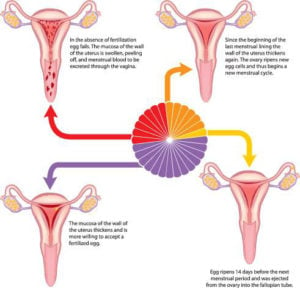
TO CHART YOUR FERTILE AND INFERTILE DAYS WITH YOUR DISCHARGES:
- You must keep track of your discharge for at least 2 cycles to be sure that you understand what is happening.
- Use an app or chart to keep track of your discharge every day.
- Start noting down your mucus from the day your periods stop completely.
- Wipe your vagina before you pee. Use a white toilet paper, look at your underwear or use clean fingers to check out the consistency.
- Chart out the period days, dry days, sticky days, wet days, slippery days and cloudy days.
- Sex can make you secrete differently, so note this down in your chart.
WHAT VAGINAL DISCHARGES MEAN
- When you are on your periods, you have very slim chances of getting pregnant.
- The immediate days after the periods are safe – you won’t get pregnant.
- Mucus can be white, yellow or cloudy and feels tacky and sticky when you ovulate. These days are high chances of getting pregnant.
- Days, when you have clear, slippery egg white kind of mucus that stretches between fingers, are your fertile days too – you’ll very likely get pregnant.
- At the end of your cycle, you’ll have dry days again – those are safe days where you can lose protection.
- After 2 months, you’ll notice a pattern – check these results with your body temperature and cycle length to get definitive results.
ARE THESE THE RIGHT METHODS FOR YOU?
All these described methods are collectively termed Fertility Awareness Methods and are around 76% to 96% effective, totally dependent on how you practice them. Beware that these methods don’t protect you from sexually transmitted diseases. There are lots of apps, charts and cycle beads that help you keep track of these methods. When in doubt, confirm with your doctor to make sure you are on the right track. We believe information is strength!
